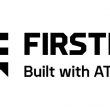News Briefs
Mark Jasin new Kenwood senior VP, GM
Kenwood USA Corp. promoted Mark Jasin to senior vice president and general manager for the company’s communications sector.
Jasin joined Kenwood in 1998 and has served as the national sales/marketing manager for Kenwood Communications since 2001. Prior to joining Kenwood, he was with Ritron, an Indiana-based two-way radio manufacturer, for 18 years, with 10 of those spent as national sales manager.
As senior vice president and general manager, Jasin will focus on strategic planning and overall sector management and will continue to work with Kenwood’s national dealer network and key customers, the company said.
FDA turns to RFID to protect nation’s drug supply
The U.S. Food and Drug Administration has stepped up its efforts to ensure the safety and security of the nation’s drug supply through the use of radio frequency identification, or RFID, technologies.
Specifically, the FDA published a guide for implementing RFID feasibility studies and pilot programs and announced an internal workgroup that would monitor RFID implementation in the pharmaceutical supply chain and identify and find solutions to regulatory issues that emerge with the use of the technology. The FDA hopes RFID will be deployed throughout the retail supply chain by 2007.
In related news, pharmaceutical manufacturer Pfizer said it would place RFID tags on cases and retail packages of its Viagra drug in an effort to combat counterfeit medications. Pfizer anticipates that the project, which it said would cost “several million dollars,” will result in RFID-labeled product being shipped by the end of 2005. Viagra was selected because it is “one of the most recognizable and counterfeited” drugs in the U.S., the company said.
Also, the Walgreen’s drug store chain said it is participating in Jumpstart, a drug-industry program supported by retailers, manufacturers and distributors to implement RFID. Walgreen’s received RFID-labeled cases and individual packages of prescription drugs from various manufacturers and distributors and reported that it is “possible to track and trace bottle-level movement” of prescription drugs through the supply chain to ensure they are coming from a legitimate source.
Transcrypt receives nearly $10 million in orders
EFJ Inc. announced that its Transcrypt International subsidiary recently received an order worth $1.7 million for its voice security products from a new customer in the Middle East, as well as an $8.2 million order from what it described as “a major customer.” Neither customer was identified.
NENA launches program to boost E911
The National Emergency Number Association launched the Next Generation E911 Partner Program, which is designed to entice private-sector companies to work more closely with government officials and NENA to update and improve the nation’s 911 system. Working groups will be formed to develop a year-to-year plan to address implementation strategies and policy issues.
“Without greater partnership and collaboration among the many players involved, America’s 911 system may never live up to consumer expectations, and increasing numbers of Americans may be stranded in their times of need,” said NENA President Bill McMurray.
Minnesota county plans new radio dispatch center
The Ramsey County (Minn.) Board plans to build a new radio dispatch center at a cost of about $2.5 million, the St. Paul Pioneer Press reported. The facility would be built on land adjacent to the county’s jail in St. Paul and would house an 800 MHz radio system that would replace legacy UHF and VHF systems that have been in use for 50 years, the paper said.
The current system dispatches calls to the county’s sheriff’s deputies and some suburban police departments. The new system could provide dispatching to other departments, including the St. Paul police department, and would enable interoperable communications between the county’s police and fire departments, the paper said.
Army awards Harris multiple contracts
Harris Corp. has won contracts from the U.S. Army worth more than $30 million to deliver its AN/PRC-117F man-pack and vehicular multi-band, multi-mission radios, the Rochester (N.Y.) Business Journal reported. The radios use software-defined radio technology to provide embedded communications security and beyond-line-of-site satellite communications, the paper said.
Florida airport deploys wide-area Wi-Fi network
Systems integrator TEACO has installed a wide-area Wi-Fi network developed by BelAir Networks at Southwest Florida International Airport in Fort Myers, Fla.
The network initially will provide Wi-Fi service throughout the airport’s two existing terminals. Future expansion plans call for an extension of the network to a new terminal currently under construction, as well as the surrounding outdoor space, runway space and support buildings.
Travelers represent the initial target market, but airlines, airport tenants, the airport’s fire department and airport security also are expected to use the service.
Raceway deploys wireless broadband network
Racing Radios, which specializes in designing and installing wireless communications networks at automobile racetracks, recently deployed a wireless broadband network at the Atlanta Motor Speedway using equipment from Motorola and Tropos Networks.
Racing Radios deployed a 900 MHz Motorola Canopy point-to-point wireless link from its off-track facility, where wired bandwidth was available, to the top of the grandstands. The connection was used to supply Tropos’ network, which redistributed the bandwidth to create a Wi-Fi mesh around the entire raceway. Users can roam freely throughout the facility while remaining connected to the Internet at broadband speeds, according to Racing Radios.
The network was tested for the first time during a NASCAR race on Oct. 31. Based on the results, Racing Radios intends to supply broadband services to racing teams, media, vendors and RV facilities, the company said.
Transit police deploys mobile database application
The N.J. Transit Police has deployed BIO-Key’s PacketCluster Patrol software application on laptop computers and on the company’s PocketBlue hand-held devices, according to BIO-Key.
The PacketCluster Patrol application enables wireless access to National Crime Information Center databases as well as state databases to run queries of individuals, motor vehicles and firearm registrations, the company said. The application also will transmit an alert to logged-on officers when a “hit” occurs, such as an arrest warrant for an individual or when a vehicle has been reported stolen.
Vanu wins Army contract for software radio
The U.S. Army Communications-Electronics Command Research, Development and Engineering Center (CERDEC) has awarded Vanu a contract to build and deliver a prototype mobile GSM cellular communications system for secure, rapid, field deployable applications, the company said. It is Vanu’s second CERDEC contract.
The company currently is demonstrating a first-generation system that uses encrypted GSM handsets, supported by a vehicle-mounted Vanu-developed software radio base station to provide communications between dismounted soldiers. The system also employs a Globalstar satellite link to enable communications back to a remote tactical operations center.
The newest contract will enable Vanu to further develop and enhance its offering by modifying the current base station system to enable encryption and meet the mobility requirements of soldiers, the company said.
Chicago Fire Department field-tests hand-helds
The Chicago Fire Department currently is field-testing hand-held mobile computers that are capable of providing incident commanders with layouts and floor plans of buildings and hazardous materials sites while in route to a scene, the Chicago Sun-Times reported. The paper said the hand-helds are valued at $1800 but did not identify the vendor.
A Chicago Firefighters Union official said such information “probably would have made a difference” in the October 2003 high-rise fire in the city’s downtown Loop business district in which six people died, according to the Sun-Times. The victims were found 90 minutes after firefighters arrived on the scene, partly because of confusion concerning the number of stairwells that were in the building and where the victims were located, the paper reported.
on the web:
For more more news, visit our Web site:
WWW.MRTMAG.COM.COM

















